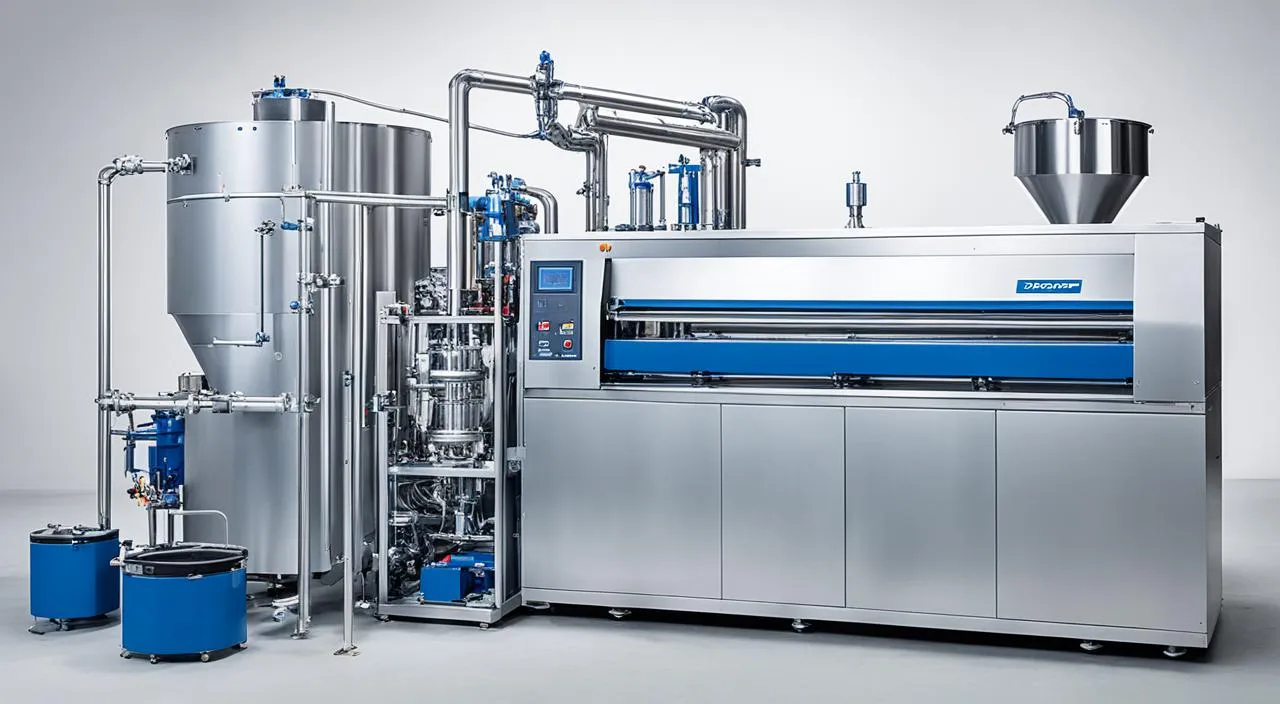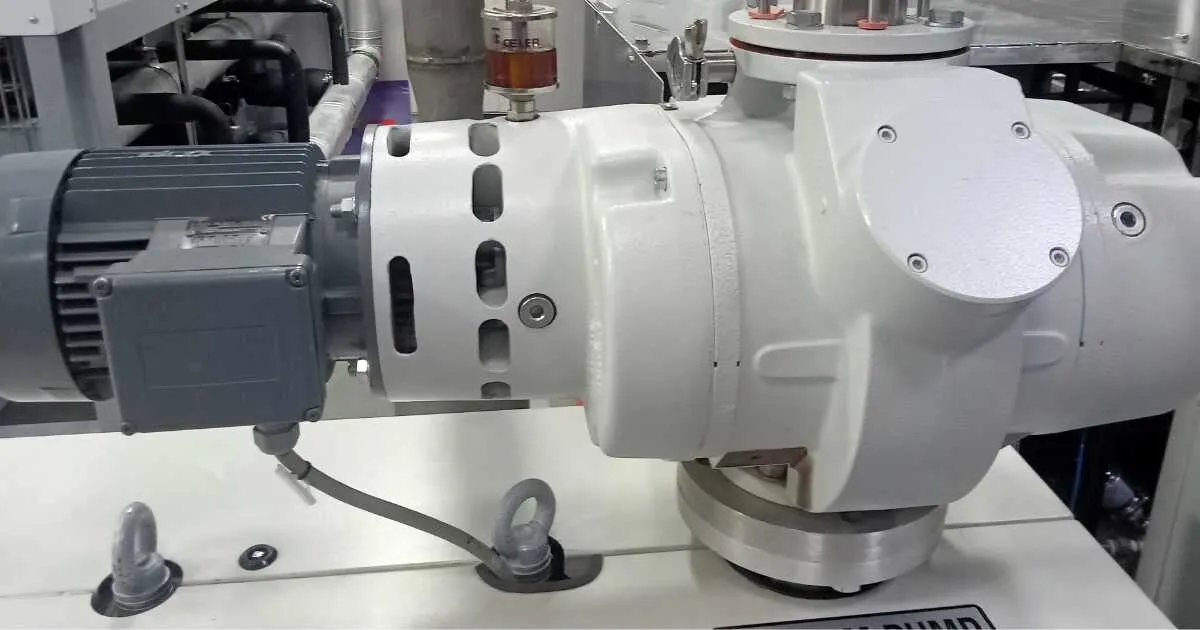Understanding the Flow of Lyophilization, commonly known as freeze-drying, is a crucial process used in various industries, such as pharmaceuticals, food, and biotechnology. It involves the removal of water from a product while preserving its structure and characteristics. The purpose of this page is to clarify the complex sequence of the lyophilization process by describing its stages, important variables, tools, quality assurance procedures, obstacles, and potential future developments.
Introduction to Lyophilization
What is lyophilization?
Lyophilization is a dehydration technique that involves freezing a product and then subjecting it to a vacuum to remove the ice by sublimation, leaving behind a stable, dried product. This process is highly effective in preserving the integrity of sensitive materials such as proteins, vaccines, and certain foods.

Importance and Applications
In many sectors, lyophilization is essential for maintaining and prolonging the shelf life of items that are heat- or moisture-sensitive. It is widely used in the food sector to preserve perishable goods, in pharmaceuticals for drug formulation, and in biotechnology for preserving biological substances like enzymes and antibodies.
Understanding the Flow of Lyophilization
The lyophilization process can be broadly divided into three main stages: pre-freezing, primary drying, and secondary drying.
Steps involved in Lyophilization
Loading stage
After starting the freeze dryer, the loading temperature is achieved, then the freeze dryer door is opened on the aseptic area side, and the empty and filled vial is loaded into the freeze dryer. The freezing cycle is then started by SCADA (Supervisory Control and Data Acquisition) systems, which are used for controlling and monitoring the freeze drying process or
Loading stage: Once the freezer dryer is started and the loading temperature is reached, the door is opened in a sterile area. Empty and filled vials are then loaded into the freeze dryer before initiating the freezing cycle using SCADA.
Pre-Freezing Stage
Before the primary drying phase begins, the product undergoes pre-freezing to solidify the water content. This is an important step since it sets the stage for how well the next drying phases work.
Importance and Preparation
Proper pre-freezing ensures uniform ice crystal formation within the product matrix, which facilitates effective water removal during drying. The product is usually pre-frozen using methods such as shelf freezing, liquid nitrogen immersion, or controlled-rate freezing.
Primary Drying Phase
The product’s frozen water sublimates during the first drying stage, going straight from solid to vapor without first going through the liquid phase.
Sublimation Process
Under vacuum conditions and controlled temperature, the ice crystals in the product sublime, i.e., they vaporize without melting, leaving behind a porous structure. This process requires careful temperature control to prevent collapse or melting of the product.
In physics, the change of a substance from a solid to a gaseous state without becoming a liquid. An example of this is the evaporation of frozen carbon dioxide (dry ice) at normal atmospheric pressure and temperature. This phenomenon is the result of vapor pressure and temperature relationships. Freeze drying involves sublimating water from frozen food under high vacuum to preserve it.
Vacuum Application
The primary drying phase is conducted under reduced pressure to facilitate efficient sublimation. Vacuum pumps are used to create and maintain the desired pressure within the lyophilizer chamber.

Here are some important points related to “Vacuum Application in Lyophilization
- The vacuum facilitates the removal of moisture from products during the lyophilization process.
- This creates sublimation conditions, allowing frozen water to evaporate without melting.
- Vacuum lowers the boiling point of water, allowing drying at lower temperatures to maintain product integrity.
- Proper vacuum application ensures efficient drying and minimizes the risk of product degradation.
- Various vacuum systems, such as pumps and control mechanisms, are used in lyophilization equipment.
- Vacuum plays an important role in increasing product stability and extending shelf life.
- Challenges such as leakage, contamination, and equipment breakdown require careful management in vacuum processes.
- Safety considerations, including ventilation and personnel training, are essential to maintaining a safe work environment.
- Advances in vacuum technology aim to improve process efficiency and reduce production costs.
- Vacuum freeze-drying occurs at low temperatures and pressures, causing moisture to be sucked out of the material.
- The vacuum system must remove water vapor, achieving specific vacuum degrees (1 Pa for medical, 10 Pa for food).
- Adequate pumping speed and water vapor extraction capacity are required.
- Select a vacuum pump to prevent performance degradation; a Rootes water ring pump or a Rootes rotary vane pump is generally preferred.
- Vacuum systems are classified into two categories: direct steam pumping and water trap vacuum pumps.
- Direct steam pumping has a simple structure and is low-cost but requires a steam boiler. Water withdrawal may be experienced.
- The Water Trap Plus Vacuum Pump provides high vacuum and reliable operation but has a complex structure and high cost.
Secondary Drying Phase
Once the majority of the water has been removed during primary drying, the product undergoes secondary drying to eliminate residual moisture and ensure long-term stability.
Desorption Process
In the secondary drying phase, the remaining bound water molecules are removed through desorption. This process involves raising the temperature of the product slightly to enhance the release of moisture.
Residual Moisture Removal
Secondary drying is critical for achieving the desired moisture content in the final product. It helps prevent microbial growth, chemical degradation, and physical instability during storage.
Stoppering stage
After completing the secondary drying process, vials are fully stoppered in the freeze dryer using the stoppering force applied by the shelf.
Unloading stage
After completion of the freeze drying and stoppering stages, reach the unloading temperature, open the door on the aseptic area side, and unload the freeze drying product.
Critical Parameters in Lyophilization
Several factors play a crucial role in determining the success of the lyophilization process.
Temperature Control
Precise control of temperature throughout the pre-freezing, primary drying, and secondary drying stages is essential to maintaining product integrity and ensuring efficient water removal.
Pressure Regulation
Optimal vacuum levels must be maintained during primary and secondary drying to facilitate sublimation and desorption processes effectively.
Time Management
The duration of each drying phase must be carefully monitored and controlled to prevent under-drying or over-drying of the product, which can compromise its quality and stability.
Equipment Used in Lyophilization
Various specialized equipment is employed in the lyophilization process to facilitate efficient drying and product preservation.
Freeze Dryers
Freeze dryers, also known as lyophilizers, are the primary equipment used for conducting the lyophilization process. They consist of chambers, shelves, condensers, and vacuum systems.
Vacuum Systems
Vacuum pumps are integral to the lyophilization process, creating and maintaining the desired vacuum levels within the chamber to facilitate water removal by sublimation.
Containment Systems
Containment systems such as vials, ampoules, and trays are used to hold the product during lyophilization, ensuring uniform freezing and drying.
Quality Control in Lyophilization
Quality control measures are essential to ensure the consistency, efficacy, and safety of lyophilized products.
Monitoring Parameters
Critical process parameters such as temperature, pressure, and moisture content are continuously monitored and recorded throughout the lyophilization process to ensure adherence to predefined specifications.
Validation Processes
Validation studies are conducted to establish the robustness and reproducibility of the lyophilization process, ensuring that the final product meets regulatory requirements and quality standards.
Challenges and Solutions
Despite its effectiveness, lyophilization poses several challenges that must be addressed to optimize the process and minimize product variability.
Product Variability
Variations in product characteristics, formulations, and freeze-drying conditions can lead to inconsistent results. Close monitoring and process optimization are essential to mitigating variability.
Scale-up Issues
Scaling up lyophilization processes from lab-scale to commercial production can present challenges related to equipment capacity, process optimization, and cost-effectiveness. Advanced planning and testing are necessary to ensure successful scale-up.
Cost Management
Lyophilization is a resource-intensive process, requiring specialized equipment, skilled personnel, and significant energy consumption. Cost-effective strategies such as process optimization and cycle time reduction can help mitigate expenses.
Future Trends in Lyophilization
Advancements in technology and process optimization are driving future developments in lyophilization.
Advanced Technologies
Innovations in freeze-drying equipment, process control systems, and formulation techniques are enhancing the efficiency, speed, and flexibility of lyophilization processes.
Process Optimization
Continuous improvement efforts focused on reducing cycle times, improving product quality, and minimizing energy consumption are shaping the future of lyophilization.
Case Studies and Examples
Real-world examples highlight the diverse applications and benefits of lyophilization across different industries.
Pharmaceutical Industry
Lyophilization plays a critical role in the formulation and production of pharmaceutical products such as vaccines, antibiotics, and biologics, ensuring long-term stability and efficacy.
Food Preservation
In the food industry, lyophilization is used to preserve perishable items such as fruits, vegetables, and instant coffee, retaining their flavor, aroma, and nutritional value.
Safety Measures in Lyophilization
Safety protocols are essential to protect personnel and ensure environmental compliance during lyophilization processes.
Personnel Safety
Proper training, personal protective equipment (PPE), and safety procedures minimize the risk of accidents and exposure to hazardous materials.
Environmental Considerations
Efforts to reduce energy consumption, minimize waste, and comply with regulatory requirements contribute to sustainable lyophilization practices.
Regulatory Compliance
Lyophilized products are subject to stringent regulatory requirements and quality standards to ensure safety and efficacy.
FDA Guidelines
The U.S. Food and Drug Administration (FDA) provides comprehensive guidelines for the development, validation, and manufacturing of lyophilized pharmaceutical products.
International Standards
International organizations such as the International Council for Harmonization (ICH) and the World Health Organization (WHO) establish harmonized standards for lyophilization processes and product quality.
Advantages and Disadvantages of Lyophilization
Advantages
- Preservation of product integrity.
- Extended shelf life.
- Retention of biological activity.
- Reduced product weight and volume.
Disadvantages
- High initial investment.
- Lengthy processing times.
- Sensitivity to process parameters.
- Potential for product variability.
Conclusion
Lyophilization is a sophisticated dehydration technique with widespread applications in pharmaceuticals, food, and biotechnology. By understanding the intricate flow of the lyophilization process and implementing rigorous quality control measures, manufacturers can produce stable, high-quality products with extended shelf life and enhanced efficacy.
Unique FAQs
What is the primary purpose of lyophilization?
Lyophilization is primarily used to remove water from sensitive materials. While preserving their structure and characteristics.
How does lyophilization differ from traditional drying methods?</h3>
<p>le=”font-family: ‘times new roman’, times, serif; font-size: 14pt;”>Unlike traditional drying methods,. Lyophilization, which involves heat, removes water by sublimation under vacuum conditions. Minimizing damage to the product.
What are the main challenges associated with lyophilization?
Product variability, scale-up issues, and cost management are among the primary challenges encountered in lyophilization processes.
What safety measures should be implemented during lyophilization?
Personnel should receive proper training. And safety protocols should be followed to minimize risks associated with hazardous materials and equipment.
How can regulatory compliance be ensured in lyophilization processes?
Compliance with FDA guidelines, international standards, and validation processes is essential to meeting regulatory requirements for lyophilized products.